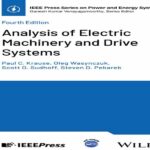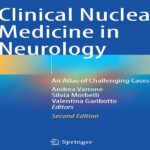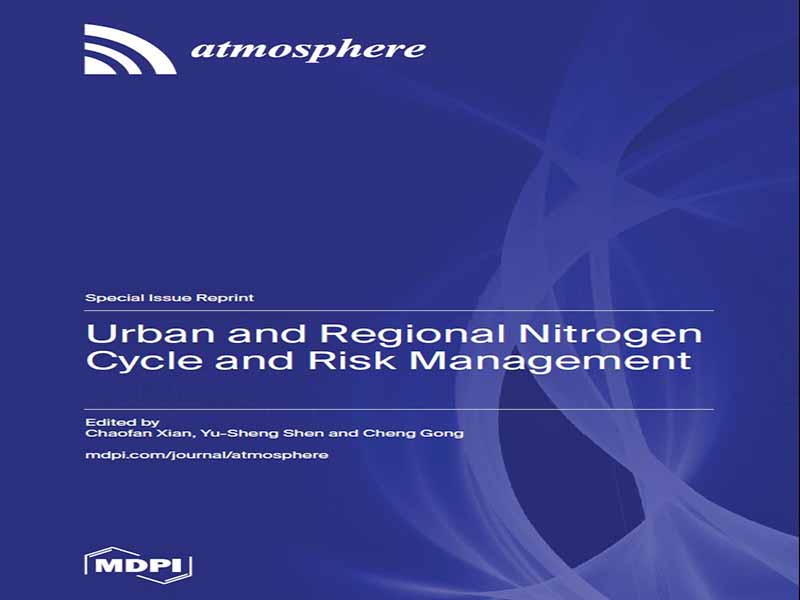- عنوان کتاب: Urban and Regional Nitrogen Cycle and Risk Management
- نویسنده: Chaofan Xian, Yu-Sheng Shen, Cheng Gong
- حوزه: آلاینده
- سال انتشار: 2025
- تعداد صفحه: 240
- زبان اصلی: انگلیسی
- نوع فایل: pdf
- حجم فایل: 7.63 مگابایت
اختلال در چرخههای نیتروژن شهری و منطقهای به دلیل شهرنشینی منجر به اثر گلخانهای، باران اسیدی، یوتریفیکاسیون و کاهش تنوع زیستی شده است. با توجه به این موضوع، اثر «آبشار نیتروژن» ناشی از اختلال در چرخه نیتروژن، پس از از دست دادن تنوع زیستی و گرمایش جهانی، به عنوان سومین مشکل مهم زیستمحیطی جهانی شناخته شده است. مدیریت ریسکهای احتمالی برای کاهش نیتروژن واکنشپذیر آزاد شده در محیط زیست شامل مدیریت صحیح نیتروژن در چرخههای تولید و مصرف منابع ضروری است که میتواند توسط رویکردهای انسانی (مانند نظارت بر آلودگی محیط زیست، فناوری سازگار با محیط زیست و رفتار ساکنان) و رویکردهای طبیعی، از جمله حفظ نیتروژن در اکوسیستمها، پشتیبانی شود. مهمتر از آن، از منظر همافزایی کاهش آلودگی و انتشار کربن، خطر آلودگی نیتروژن اغلب در مراحل اولیه با انتشار بیش از حد گازهای گلخانهای و ذرات جوی همراه است. پیشرفت در زمینههای جدید تحقیقاتی به مدیریت ریسک مربوطه بستگی دارد. گزارشهای ارائه شده در شماره ویژه، «چرخه نیتروژن شهری و منطقهای و مدیریت ریسک»، نتیجه کار مشترک بین محققان در تلاش برای کاهش انتشار گازهای جوی و کاهش خطرات نیتروژن، شامل مطالعات تجربی و نظارتی و مطالعات مدلسازی ریاضی/عددی در مقیاس شهری و منطقهای است. انتشارات این شماره (12 مقاله) موضوعات جفت شدن نیتروژن و کربن (5)، اثرات اکولوژیکی رسوب نیتروژن (4)، تجزیه و تحلیل جریان نیتروژن شهری (1) و نظارت و مدلسازی محیطی (2) را پوشش میدهد. مروری مختصر بر یافتههای اصلی و نتیجهگیری مقالات در شماره ویژه در زیر ارائه خواهد شد. وو و شن [1] از تجزیه و تحلیل کتابسنجی استفاده کردند و دریافتند که شکافهایی بین سیاست کم کربن و آگاهی/رفتار عمومی در نقاط حساس تحقیقاتی «کاهش انتشار کربن» وجود دارد که مانع پیشرفت تحقیقات در همافزایی کاهش آلودگی نیتروژن (N) و انتشار کربن مورد توجه مدیریتهای ریسک میشود. شهرنشینی شاخص مهمی از پیشرفت شهر است که ممکن است رشد انتشار کربن همراه با آزادسازی نیتروژن، به ویژه در تراکم شهری را هدایت کند. گائو و همکاران. [2] تغییرات مکانی و زمانی انتشار کربن در منطقه شهری دلتای رودخانه مروارید (PRD) در چین را که از آلودگی نیتروژن آب رنج میبرد، بررسی کردند. آنها دریافتند که کل انتشار کربن در منطقه PRD طی سالهای 2009 تا 2019 افزایش یافته است و نقاط داغ آن عمدتاً در شهرهای گوانگژو، شنژن و دونگوان توزیع شدهاند. لیو و همکاران [3] به طور جامع بودجه گازهای گلخانهای شهرهای پکن و شنژن را از سال 2005 تا 2020 محاسبه کردند و نشان دادند که بخش فعالیتهای انرژی بیشترین سهم را در انتشار گازهای گلخانهای در این دوره داشته است و به ترتیب 82.5٪ و 76.0٪ از کل انتشار گازهای گلخانهای در پکن و شنژن را تشکیل میدهد. جذب کربن توسط این دو اکوسیستم شهری میتواند تنها بخشهای کوچکی از انتشار آنها را جذب کند و نرخ خنثیسازی جذبکنندهها از 1.7٪ تا 2.3٪ در پکن و از 0.3٪ تا 1.5٪ در شنژن متغیر بود. این مطالعه نشان داد که اندازه خانوار اثرات متضادی بر انتشار گازهای گلخانهای در دو شهر دارد، یعنی افزایش 1 درصدی در اندازه خانوار، انتشار گازهای گلخانهای را در شنژن 0.487 درصد افزایش میدهد اما در پکن آن را 2.083 درصد کاهش میدهد. سونگ و همکاران [4] همچنین با مصاحبه با بیش از 1000 خانوار دامدار از 15 شهرستان دریافتند که اندازه خانوار عامل اصلی تأثیرگذار بر انتشار کربن شخصی در منطقه سانجیانگیوان در فلات چینگهای-تبت است. هرچه تعداد افراد ساکن در خانوار بیشتر باشد، انتشار سرانه کربن کمتر است. با این حال، اندازه اثر کاهش بالقوه کربن هنگامی که تعداد اعضای خانواده به بیش از سه نفر افزایش مییابد، ضعیفتر میشود. آنها پیشنهاد کردند که ممنوعیت چرا و تغییر رژیم غذایی کم کربن به معیشت کم کربن دامداران کمک میکند، که این امر همچنین ممکن است به کاهش سبک زندگی دامداران با نیتروژن کمتر با آزاد شدن کمتر کود-نیتروژن و دام-نیتروژن کمک کند. لاما و همکاران. [5] وضعیت حفاظت و اثربخشی پارکهای ملی، ذخایر طبیعی، پارکهای جنگلی، ژئوپارکها و نقاط دیدنی را در ترسیب کربن در فلات لس در چین در طول سالهای 2000 تا 2020 ارزیابی کردند. آنها دریافتند که همه انواع مناطق حفاظتشده موجود، نمایندگی خوبی دارند و اثربخشی حفاظتی خوبی در ترسیب کربن دارند. ذخایر طبیعی، که در آنها چرخه طبیعی نیتروژن حفظ میشود، نمایندهترین شکل ترسیب کربن هستند اما کمترین اثربخشی را در حفاظت از ترسیب کربن دارند. آنها پیشنهاد کردند که اجرای اقدامات احیا در مناطق ترسیب کربن کم در مراتع و ذخایر طبیعی گیاهان وحشی به دستیابی زودهنگام به هدف خنثیسازی کربن کمک میکند، که همچنین میتواند محافظت از چرخههای طبیعی نیتروژن در این مکانها را از دخالت انسان به حداکثر برساند.
Disturbance of urban and regional nitrogen cycles due to urbanization have resulted in the greenhouse effect, acid rain, eutrophication, and reductions in biodiversity. In light of this, the ‘nitrogen cascade’ effect induced by nitrogen cycle disruption has been recognized as the third most important global environmental problem after biodiversity loss and global warming. Possible risk managements to reduce reactive nitrogen being released into the environment include proper nitrogen management within the production and consumption cycles of essential resources, which could be supported by anthropogenic approaches (e.g., environmental pollution monitoring, environmentally friendly technology and residents’ behavior) and natural-based approaches, including nitrogen retention within ecosystems. More importantly, from the perspective of synergizing the reduction in pollution and carbon emissions, the risk of nitrogen pollution is often accompanied by excessive emissions of greenhouse gases and atmospheric particles in the early stage. Progress in new areas of research will depend on relevant risk management. The reports presented in the Special Issue, ‘Urban and Regional Nitrogen Cycle and Risk Management’, are the result of collaborative work between researchers in an effort to reduce atmospheric emissions and mitigate the nitrogen risks, including both experimental and monitoring studies and mathematical/numerical modeling studies on the urban and regional scale. The publications of the issue (12 articles) cover the subjects of nitrogen and carbon coupling (5), ecological effects of nitrogen deposition (4), urban nitrogen flow analysis (1), and environmental monitoring and modeling (2). A brief overview of the main findings and conclusions of articles in the Special Issue will be presented below. Wu and Shen [1] used bibliometric analysis and found that there are gaps between low-carbon policy and public awareness/behavior in the research hotspots of “Carbon Emission Reduction”, which hinder research progress in synergizing the reduction of nitrogen (N) pollution and carbon emissions addressed by risk managements. Urbanization is a significant indicator of city progress, which may drive the growth of carbon emissions accompanied by N release, especially in urban agglomeration. Gao et al. [2] examined the spatial and temporal variations of carbon emissions in the Pearl River Delta (PRD) urban agglomeration in China, which is suffering from water N pollution. They found that total carbon emissions in the PRD region have been increasing over 2009–2019 with hotspots mainly distributed in Guangzhou, Shenzhen, and Dongguan cities. Liu et al. [3] comprehensively accounted for the greenhouse gas budgets of Beijing and Shenzhen cities from 2005 to 2020 and revealed that the energy activity sector was the greatest contributor to GHG emissions in this period, accounting for 82.5% and 76.0% of the total GHG emissions in Beijing and Shenzhen, respectively. The carbon sink provided by these two urban ecosystems could absorb only small parts of their emissions, and the neutralization rates of sinks ranged from 1.7% to 2.3% in Beijing and from 0.3% to 1.5% in Shenzhen. This study found that household size had opposite effects on the two cities’ emissions, i.e., a 1% increase in household size would increase GHG emissions by 0.487% in Shenzhen but reduce them by 2.083% in Beijing. Song et al. [4] also found that household size was the main diver influencing personal carbon emissions in the Sanjiangyuan region of the Qinghai– Tibet Plateau by interviewing more than 1000 herder households of 15 counties. The more people living in the household, the lower the per-capita carbon emissions. However, the effect size of potential carbon reductions was weakened when the number of family members rose to over three. They proposed that grazing prohibitions and low-carbon dietary shifts would contribute to low-carbon herder livelihoods, which also may contribute to lower N herder lifestyles with less fertilizer-N and livestock-N being released. Lama et al. [5] evaluated the conservation status and effectiveness of national parks, nature reserves, forest parks, geo-parks, and scenic spots on carbon sequestration within the Loess Plateau in China throughout 2000–2020. They found that all existing protected area types have good representation and conservation effectiveness on carbon sequestration. Nature reserves, where the natural N cycle is maintained, are the most representative form of carbon sequestration but are the least effective in protecting carbon sequestration. They proposed that implementing restoration measures in low carbon sequestration areas within grassland and wild plant nature reserves will help to achieve the goal of carbon neutrality early, which also can maximize the protection of the natural nitrogen cycles in these places from human interference.
این کتاب را میتوانید از لینک زیر بصورت رایگان دانلود کنید:
Download: Urban and Regional Nitrogen Cycle and Risk Management





































نظرات کاربران